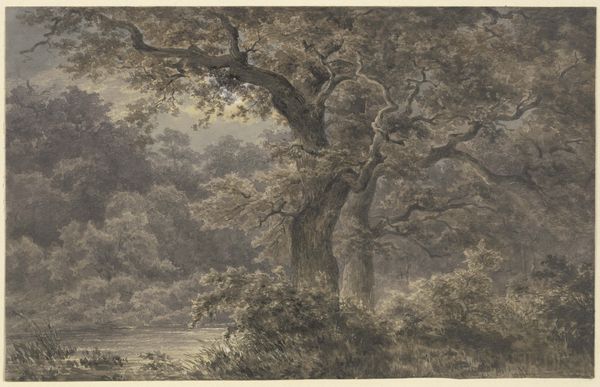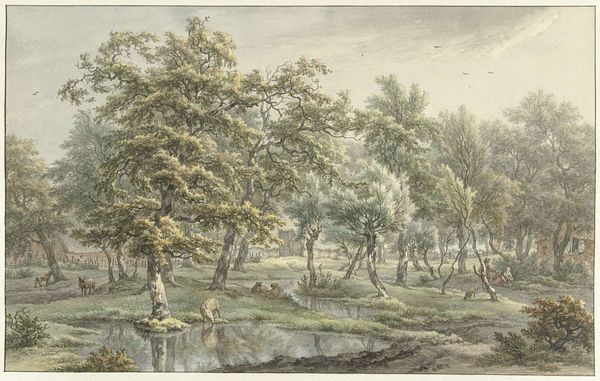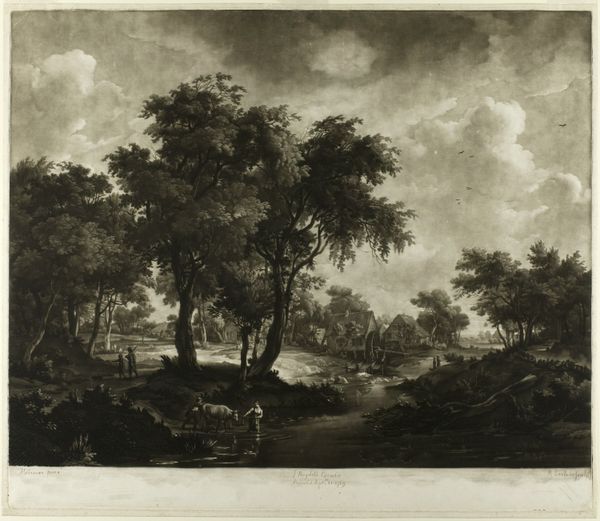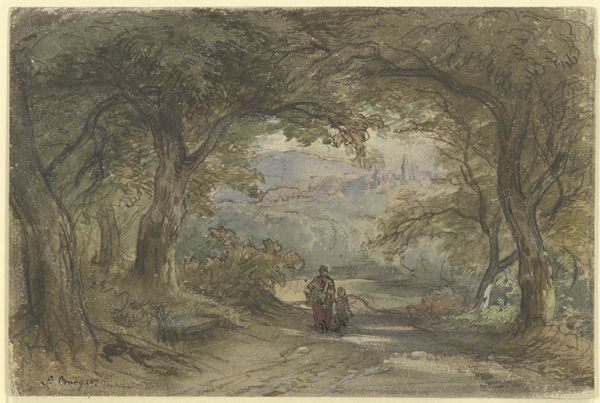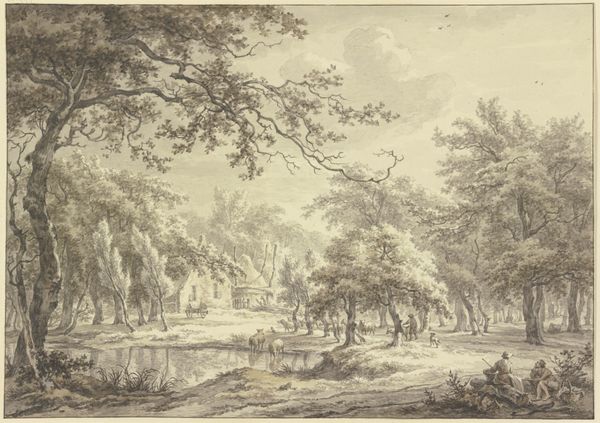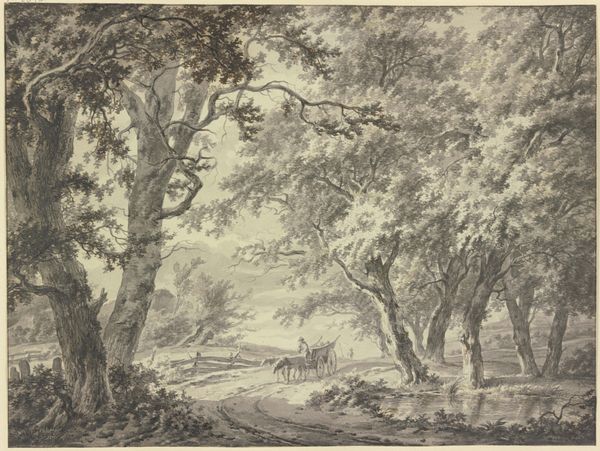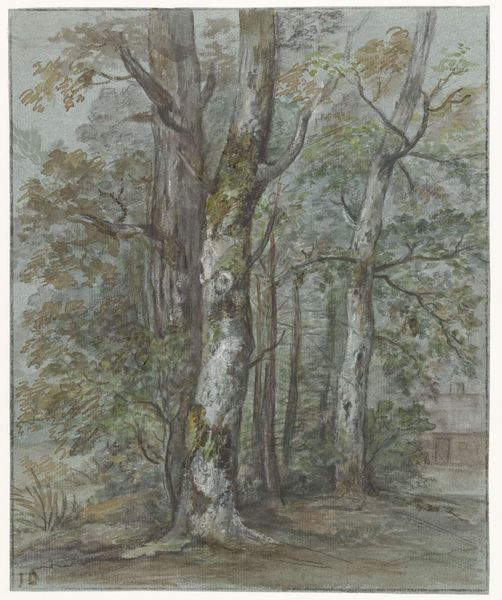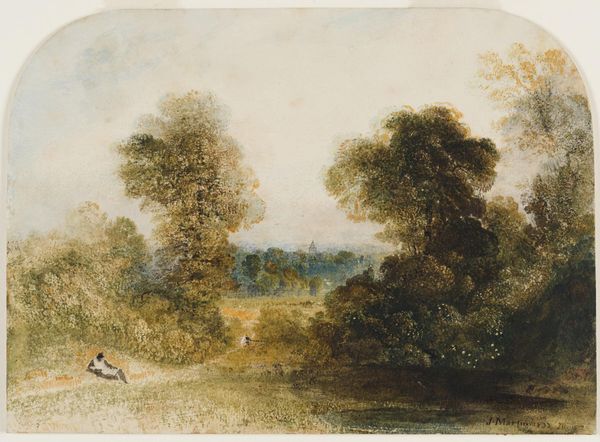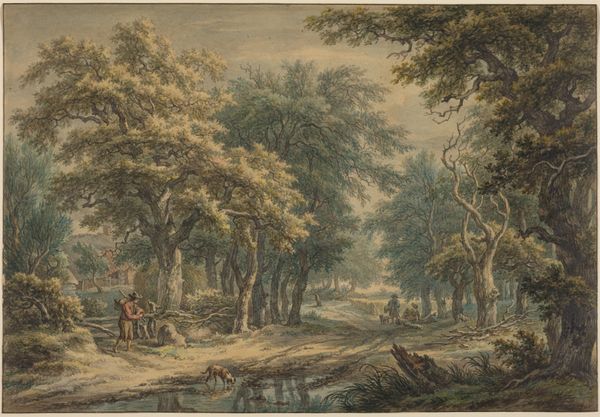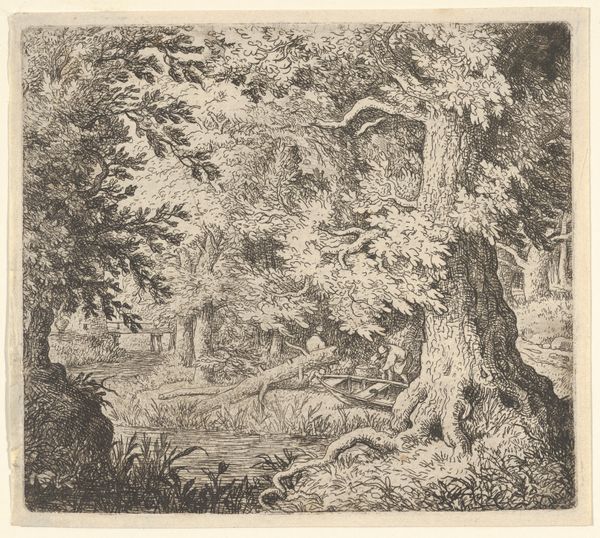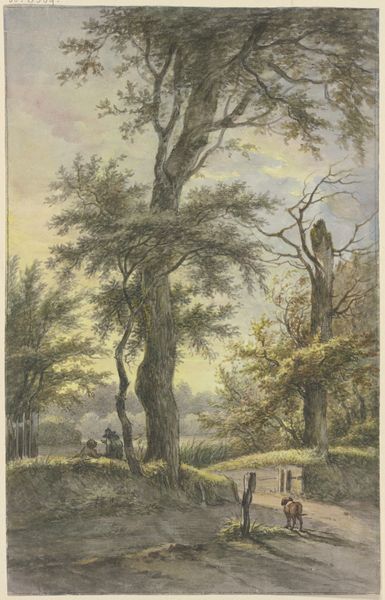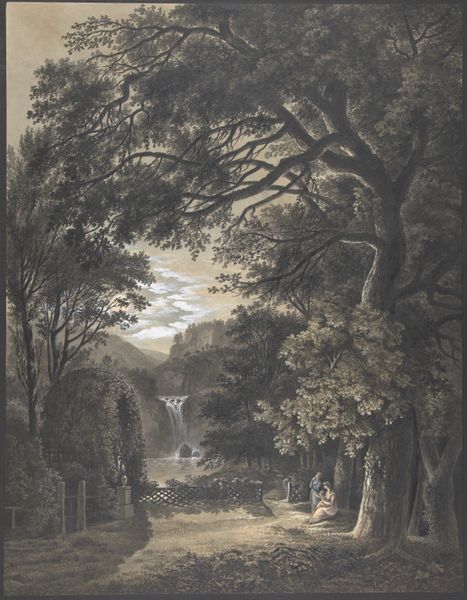
drawing, print, plein-air, watercolor
#
drawing
# print
#
plein-air
#
landscape
#
watercolor
#
forest
#
romanticism
#
park
#
watercolor
Dimensions: sheet: 9 x 12 3/16 in. (22.9 x 30.9 cm)
Copyright: Public Domain
Curator: Paul Sandby created this watercolor, "Windsor Great Park," sometime in the 1790s. It's part of the collection here at The Metropolitan Museum. Editor: The initial feeling is of entering a dense, almost claustrophobic forest, rendered through quite muted, earthy tones, isn’t it? It feels very textural, despite the fluidity of the watercolor medium. Curator: Sandby was actually one of the pioneers of watercolor in Britain. Crucially, he created many plein-air studies, contributing to a whole tradition and market around picturesque landscape imagery, fuelled by the changing relationship between aristocracy, land and national identity at the time. Editor: It’s interesting you say that. I was immediately drawn to how the technique, specifically the application of the watercolor, mirrors a very hands-on, labour-intensive engagement with the subject matter. It’s less about perfect representation, more about evoking the physicality of the space and experience. It must have been quite a feat, hauling his equipment into the landscape like this! Curator: Absolutely! The social function is critical. Royal landscapes like Windsor Great Park were increasingly sites for aristocratic leisure and display. Sandby catered to a demand, producing images that naturalized class power and made the consumption of picturesque views into a signifier of taste and status. He profited from the demand for the genre, also translating many of his drawings into prints that allowed a wide distribution. Editor: Looking closely, it’s less 'wild' than it seems, isn’t it? There’s a real artificiality in how that pond has been made, the figures strolling at a distance... it’s constructed nature, really. Curator: Precisely. Thinkers at the time argued that refining the landscape could actually lead to moral improvement, especially as many of the great aristocratic estates were redesigned, shifting agriculture to pleasure grounds. It goes back to the political theories concerning the perfectibility of the human spirit. The landed gentry become figures of aspiration and custodians of beauty and moral fortitude. Editor: Which is reflected in Sandby's deliberate arrangement of tones and light... making Windsor look like Arcadia itself! I do still get the sense of an individual making process being central. How Sandby handled the material, working in the elements, even those quick marks adding life in the shadows feel extremely personal and spontaneous. Curator: It’s that tension – the layering of the pastoral ideal onto lived social reality – which gives Sandby’s work a fascinating charge for modern viewers, as well as insights into its original circulation and consumption. Editor: Yes, a beautiful record that reveals both a careful manufacturing and immediate relationship to a specific place.
Comments
No comments
Be the first to comment and join the conversation on the ultimate creative platform.
